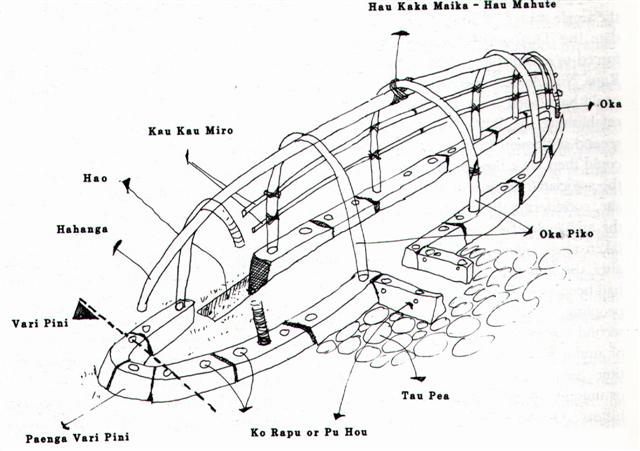Possibly hau tea with Janus eyes (at Cb13-28, where 132 * 8 = 32 * 33) is meant to have a central position. 353 - 68 = 285 (= 365 - 80), but this relation is not unique for Gb13-28, it is instead the rule for all glyphs in this corner of time:
353 is the result of the operation 719 - 366. Line Cb14 has only 19 glyphs and it is beginning with a 'great sweep':
We saw this unusual type of glyph also in the last line of H, and its double 12 (12-12) perhaps can be an argument for March 12 at Cb14-1:
468 = 103 (April 13) + 365. 468 - 432 (Cb14-1) = 36. But the Mamari text does not reach quite as far as the H text:
Koti at Cb14-8 could refer to 15 * 29˝ = 442˝. There are 6 days from the 'great sweep' in Cb14-1 to the great sweep in Cb14-7. Ca1-1 has been identified with March 22 and from March 19 there are 3 days:
Perhaps the reason for March 22 at Ca1-1 is a projection from September 22 (autumn equinox north of the equator). It could be a Sign for the reader on Easter Island that the text was beginning with spring. This would explain why the last glyph in the text seems to be at March 30 (= equivalent to the last day of September). There is possibly a sign of 'not complete' (= fraction) in Cb14-11. However, a more probable interpretation is to see a 'cut-off' sign, i.e. to regard March 22 as day 366. The hand is not there and the mouth is very tiny - spring is not in front. "... due to the gods' knowledge of prophecies foretelling great trouble from Fenrir and his rapid growth, the gods bound him, and as a result Fenrir bit off the right hand of the god Týr ..." (Wikipedia)
Tyr = Mars, the god of daylight. Significantly the creator of the figure has hidden his unharmed left hand at the back - the implication could be 'a time with no daylight. Similarly, Cb14-11 just after the southern autumn equinox implies Sun is 'absent'. | ||||||||||||||||||||||||||||||||||||||||||||||||||||||||||||||||||||||||||||||||||||||||||||||||||||||||||||||||||||||||||||||


















